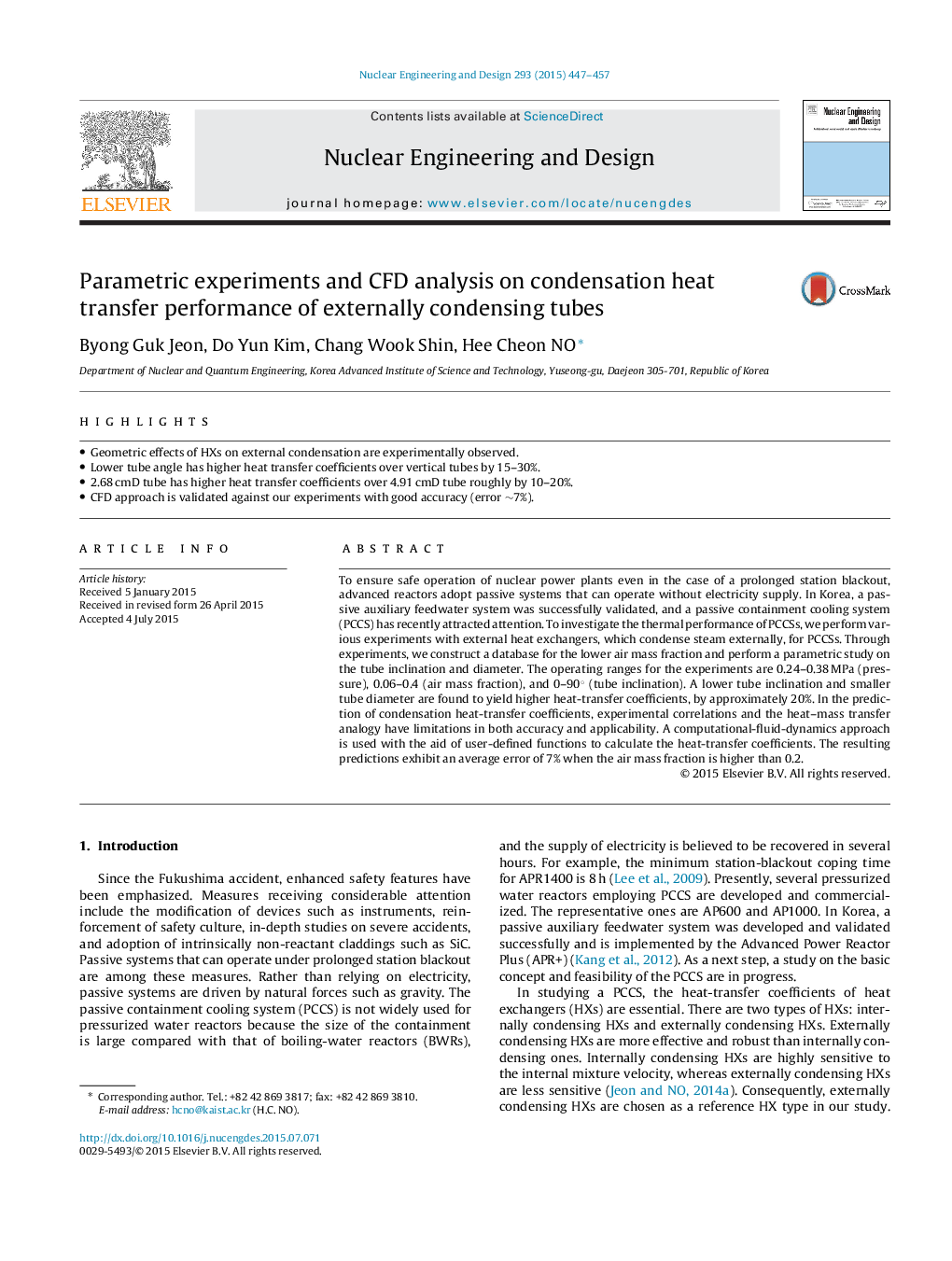| Article ID | Journal | Published Year | Pages | File Type |
|---|---|---|---|---|
| 6760936 | Nuclear Engineering and Design | 2015 | 11 Pages |
Abstract
To ensure safe operation of nuclear power plants even in the case of a prolonged station blackout, advanced reactors adopt passive systems that can operate without electricity supply. In Korea, a passive auxiliary feedwater system was successfully validated, and a passive containment cooling system (PCCS) has recently attracted attention. To investigate the thermal performance of PCCSs, we perform various experiments with external heat exchangers, which condense steam externally, for PCCSs. Through experiments, we construct a database for the lower air mass fraction and perform a parametric study on the tube inclination and diameter. The operating ranges for the experiments are 0.24-0.38 MPa (pressure), 0.06-0.4 (air mass fraction), and 0-90° (tube inclination). A lower tube inclination and smaller tube diameter are found to yield higher heat-transfer coefficients, by approximately 20%. In the prediction of condensation heat-transfer coefficients, experimental correlations and the heat-mass transfer analogy have limitations in both accuracy and applicability. A computational-fluid-dynamics approach is used with the aid of user-defined functions to calculate the heat-transfer coefficients. The resulting predictions exhibit an average error of 7% when the air mass fraction is higher than 0.2.
Related Topics
Physical Sciences and Engineering
Energy
Energy Engineering and Power Technology
Authors
Byong Guk Jeon, Do Yun Kim, Chang Wook Shin, Hee Cheon NO,
